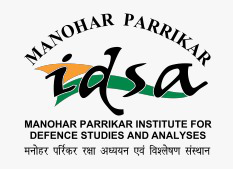Surya Kiran XVIII: Strengthening India–Nepal Military Cooperation
- April 29, 2025 |
- IDSA Comments
Introduction
India conducts long-duration military exercises with several countries, but one of its most prominent joint military exercises is with Nepal. The 18th edition of the joint military exercise between India and Nepal, Surya Kiran, was conducted in Shanjhandi, situated in the Shivalik ranges of Western Nepal, from 31 December 2024 to 13 January 2025. The primary aim of the joint exercise was to enhance capabilities amongst the two armies as well as develop mutual understanding and enhance operational preparedness. The exercise signifies the strong bonds of friendship and mutual trust to address common security objectives and enhance defence cooperation.[1]
Historical Aspects
The Indo-Nepal relationship holds strategic importance in the field of defence. Historically, India–Nepal Army relations can be traced back to the Treaty of Sugauli (1816), which established a ground-breaking precedent for recruiting Gorkha soldiers into the British Army.[2] In 2025 approximately 34,000 Gurkha soldiers are in the Indian Army with a large number of retired pensioners as well.[3] Post-independence, India’s cooperation with the Nepal Army involved assistance in special training courses, modernisation of equipment supplies and high-level visits.
The Surya Kiran joint exercises between India and Nepal were conducted for the first time in 2011 in Vairengte, Mizoram, India.[4] The details of the military exercises are given in Table 1. These exercises, lasting a maximum duration of 14 days, are organised alternatively in India and Nepal. The first two years of exercise started at the platoon level and the subsequent exercises were held at the battalion level.[5]
Table 1. India and Nepal Surya Kiran Military Exercise 2011–2025
| Surya Kiran EX. | Period | Location |
| Surya Kiran I | 14th–27th March 2011 | Vairengte, Mizoram, India |
| Surya Kiran II | 9th–22nd December 2011 | Amlekhgunj, Nepal |
| Surya Kiran III | 15th–28th June 2012 | Himalayan region of India–Nepal Border |
| Surya Kiran IV | 3rd–6th December 2012 | Himalayan region of India–Nepal Border |
| Surya Kiran V | 23rd September–6th October 2013 | Pithoragarh, Uttarakhand |
| Surya Kiran VI | 5th–18th March 2014 | Shaljhandi, Nepal |
| Surya Kiran VII | 18th–31st August 2014 | Pithoragarh, Uttarakhand |
| Surya Kiran VIII | 23rd Feburary–8th March 2015 | Shaljhandi, Nepal |
| Surya Kiran IX | 8th–21st February 2016 | Pithoragarh, Uttarakhand |
| Surya Kiran X | 31st October–13th November 2016 | Shaljhandi, Nepal |
| Surya Kiran XI | 7th–20th March 2017 | Pithoragarh, Uttarakhand |
| Surya Kiran XII | 3rd–16th September 2017 | Shaljhandi, Nepal |
| Surya Kiran XIII | 30th May–12th June 2018 | Pithoragarh, Uttarakhand |
| Surya Kiran XIV | 3rd–16th December 2019 | Shaljhandi, Nepal |
| Surya Kiran XV | 20th September–3rd October 2021 | Pithoragarh, Uttarakhand |
| Surya Kiran XIV | 16th–29th December 2022 | Shaljhandi, Nepal |
| Surya Kiran XVII | 24th November–7th December 2023 | Pithoragarh, Uttarakhand |
| Surya Kiran XVIII | 31st December 2024–13th January 2025 | Shaljhandi, Nepal |
Source: Annual Reports, Ministry of Defence, Government of India; Indian Embassy, Kathmandu, Nepal.
Significance and Key Challenges
The 18th battalion level joint exercise Surya Kiran had approximately 700 personnel from both India and Nepal.[6] The Indian army contingent comprised 11th Gorkha Rifles and the Nepali Army contingent comprised of the Srijung Battalion. Both the army contingents shared tactics and strategies for operating together in high-altitude areas in counter-terrorism and jungle warfare operations.[7]
Both armed forces have jointly responded to natural disasters like earthquakes and floods. India launched Op Maitri when Nepal was struck by a massive earthquake in April 2015. The Indian Army, the Indian Air Force, National Disaster Response Force (NDRF) and specialised medical teams carried out Humanitarian Assistance and Disaster Relief (HADR) operations.[8] Surya Kiran exercises not only help improve bilateral military cooperation, but also their ability to work together in multilateral forums like the UN. Both India and Nepal contribute significantly to maintain peacekeeping operations under the United Nations Charter. Notably, the exercises followed the successful visit of the Indian Army Chief General Upendra Dwivedi to Nepal and that of the Nepali Army Chief General Ashok Raj Sigdel to India.[9]
Nepal and China share a border area of nearly 1,400 km, with two main border points—Rasuwagadhi and Kerung. Nepal and China held their first ever joint military drill in 2017, a major turning point in bilateral defence cooperation.[10] China has deepened ties with Nepal as part of the Belt and Road Initiative (BRI) through significant investments in road networks, airports, hydroelectric power plants and tunnel projects.[11] This growing Nepal–China cooperation carries broader implications for regional power dynamics. China moreover is printing new maps, which include disputed territories.[12] These developments have the potential to alter traditional power dynamics in the region, thereby creating a trust gap in the historically unique and exemplary relations between India and Nepal.
The combined joint training exercise will help India and Nepal counter illegal activities in the border areas. In recent years, both countries experienced increased problems, including those relating to cross-border crimes, drug trafficking, fake currency transactions and other illegal activities.[13] The concern is that China’s influence in Nepal could exacerbate these issues, either by making the border more porous to non-state actors or by Nepal becoming less cooperative in addressing these security challenges under Chinese influence.[14]
The Agnipath hiring scheme for recruitment into the Indian armed forces, meanwhile, has raised serious concerns among Nepali youth.[15] After the end of the colonial rule, recruiting Gorkhas into the Indian Army continued under the 1947 Tripartite Agreement. The continuity of the military exercises is a key pillar to further strengthen India–Nepal bilateral military relations.
Conclusion
The Surya Kiran exercises demonstrate India and Nepal’s commitment to regional security cooperation. The training’s focus on counter-terrorism, disaster management and mountain warfare operations enhance military interoperability and combat readiness. As geopolitical dynamics evolve in the Himalayan region, this bilateral military engagement remains crucial for maintaining strategic balance and regional stability. Continuous improvement in training methods will ensure both armies remain prepared for evolving threats.
Views expressed are of the author and do not necessarily reflect the views of the Manohar Parrikar IDSA or of the Government of India.
[1] “Indian Army Contingent Departs for India- Nepal Joint Military Exercise Surya Kiran”, Press Information Bureau, Ministry of Defence, Government of India, 28 December 2024.
[2] Priyanka Kumari and Ramanek Kushwaha, “Sugauli Treaty 1816”, International Journal of History, Vol. 1, No. 1, 2019, pp. 42–47.
[3] Ashish Dangal, “Gorkha Soldiers for India: Army Chief Urges Nepali Counterpart to Resume Troop Recruitment of ‘Feisty’ Soldiers”, The EurAsian Times, 16 January 2025.
[4] “Annual Report 2011-2012”, Ministry of Defence, Government of India.
[5] Pankaj Rawal, “Military Diplomacy and Its Role in the Foreign Policy of Nepal”, Thesis, Naval Postgraduate School, December 2019.
[6] “Surya Kiran: Indo-Nepal Joint Military Ex Focuses on Urban Warfare, Jungle Survival”, Indian Defence News, 10 January 2025.
[7] “Indian Army Contingent Departs for India- Nepal Joint Military Exercise Surya Kiran”, no. 1.
[8] Captain Avinash Chherty, “Decoding Indo-Nepal Relations from the Prism of Indian Military Diplomacy”, CLAWS, August 2021.
[9] “Successful Conclusion of Suprabal Janasewashree General Ashok Raj Sigdel’s Visit to India: Strengthening Bilateral Ties and Achieving Key Milestones”, Press Information Bureau, Ministry of Defence, Government of India, 15 December 2024.
[10] Pankaj Rawal, “Military Diplomacy and Its Role in the Foreign Policy of Nepal”, no. 5.
[11] Krishna Prasian, “Nepal has Two Main Border Points with China. But Why Does Trade Suffer?”, The Kathmandu Post, December 2022.
[12] K.S. Tomar, “Domestic and Foreign Policy Challenges before Modi 3.0”, The South Asian Times, June 2024.
[13] S. Rajagopal, “Indo-Nepal Defence Relations: A Historical Perspective”, The Quarterly Journal of the Mythic Society, Vol. 113, No. 3, 2022, pp. 76–84.
[14] Francioni Andrea, “Geopolitical Shifts in China-Nepal-India Relations”, Stratheia.com, 25 February 2024.
[15] Ethirajan Anbarasan, “Agnipath Scheme: The Pain of Nepal’s Gurkhas over Indian Army’s New Hiring Plan”, BBC News, 28 August 2023.




